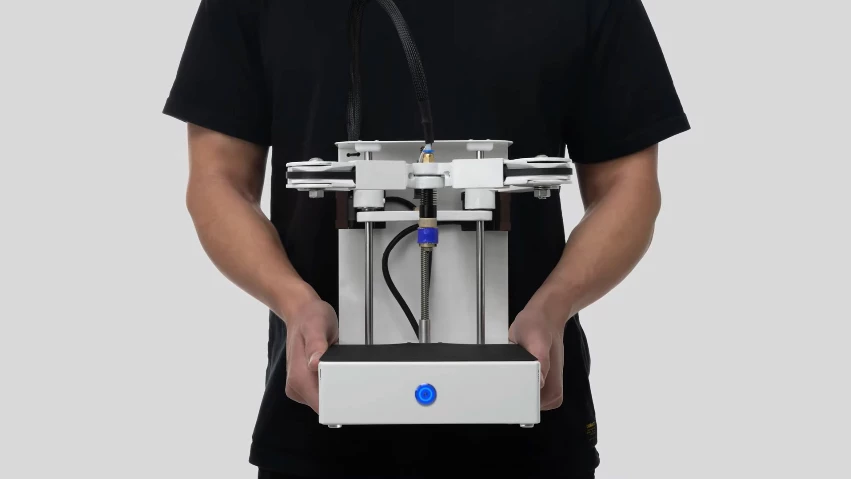On most consumer 3D printers, the print head moves by sliding horizontally along rails, and vertically along rods. The Plybot is different, though, in that it "holds" its head in two robotic arms.
Invented by British engineer Josh Mitchell, the device is now being commercialized by California-based company Hangar 75. Like other fused deposition modelling (FDM) 3D printers, it utilizes spools of plastic filament which it melts and extrudes, building three-dimensional objects up one layer of molten plastic at a time.
Most FDM printers incorporate a frame that's built around and above the print bed. The print head – which incorporates the extrusion nozzle – slides back and forth on rails within that frame, and moves vertically along integrated rods.
By contrast, the Plybot's nozzle sits at the joined ends of two hinged, motorized arms. These move it across the horizontal plane, while the whole arm assembly moves vertically along a row of three rods at the back.
So, why bother? Well, apart from being rather mesmerizing to watch, the Plybot is claimed to run much quieter than conventional FDM printers, it's more compact, it can print right to the edges of its print bed, and it's just generally less mechanically complex – and thus relatively inexpensive.

Some of the Plybot's additional features include an auto-levelling print bed, a cooling fan, and sensors that control filament flow. It's claimed to be compatible with a wide variety of plastic types, and is capable of receiving user-created CAD files via Wi-Fi, USB or SD card. That said, utilizing an accompanying iOS/Android app, users can set it to print a variety of preprogrammed objects.
Potential buyers should take note, its maximum print size is 7 inches wide by 6 inches deep by 5 inches high (178 by 152 by 127 mm). Depending on whether they're just experimenting or creating a finished product, users can choose between Draft, Normal and Fine print speeds. Its resolution ranges from 0.05 to 0.3 mm.
Should you be interested, the Plybot is currently the subject of an Indiegogo campaign. A pledge of US$339 will get you one, assuming it reaches production. The planned retail price is $399.
You can see it in action, in the video below.
Source: Indiegogo




